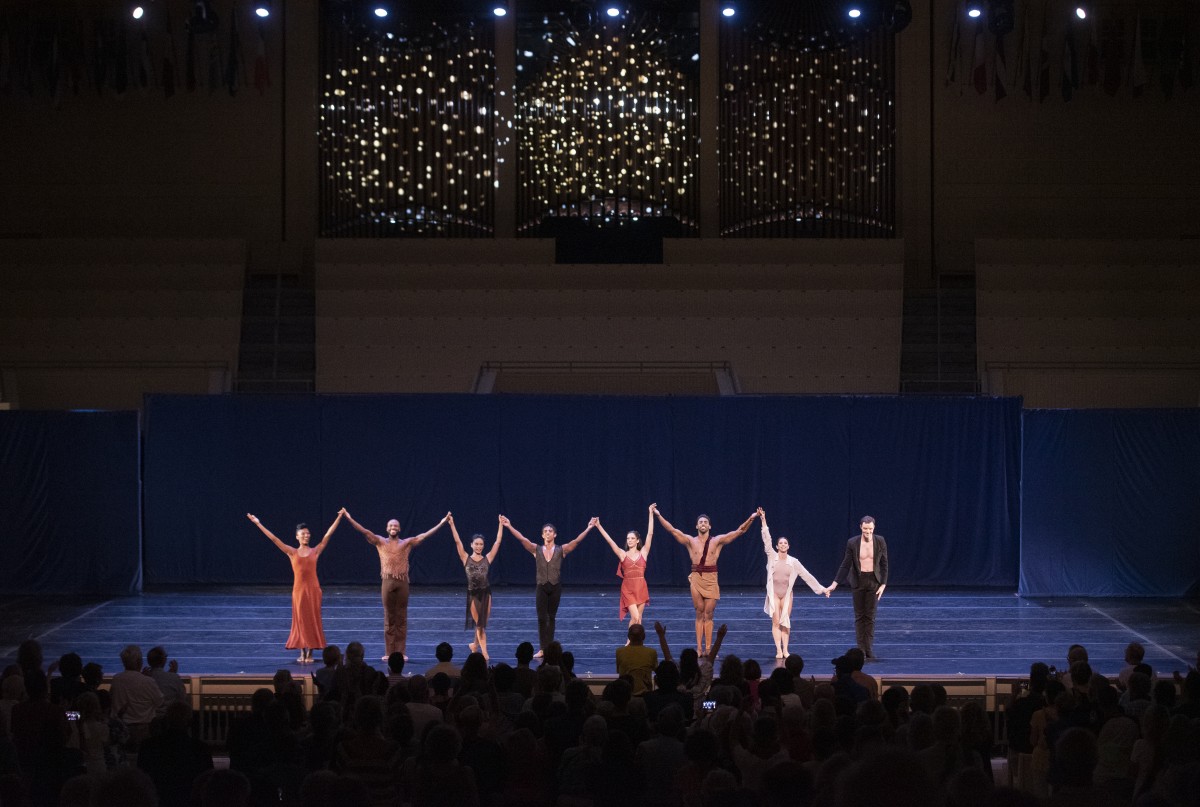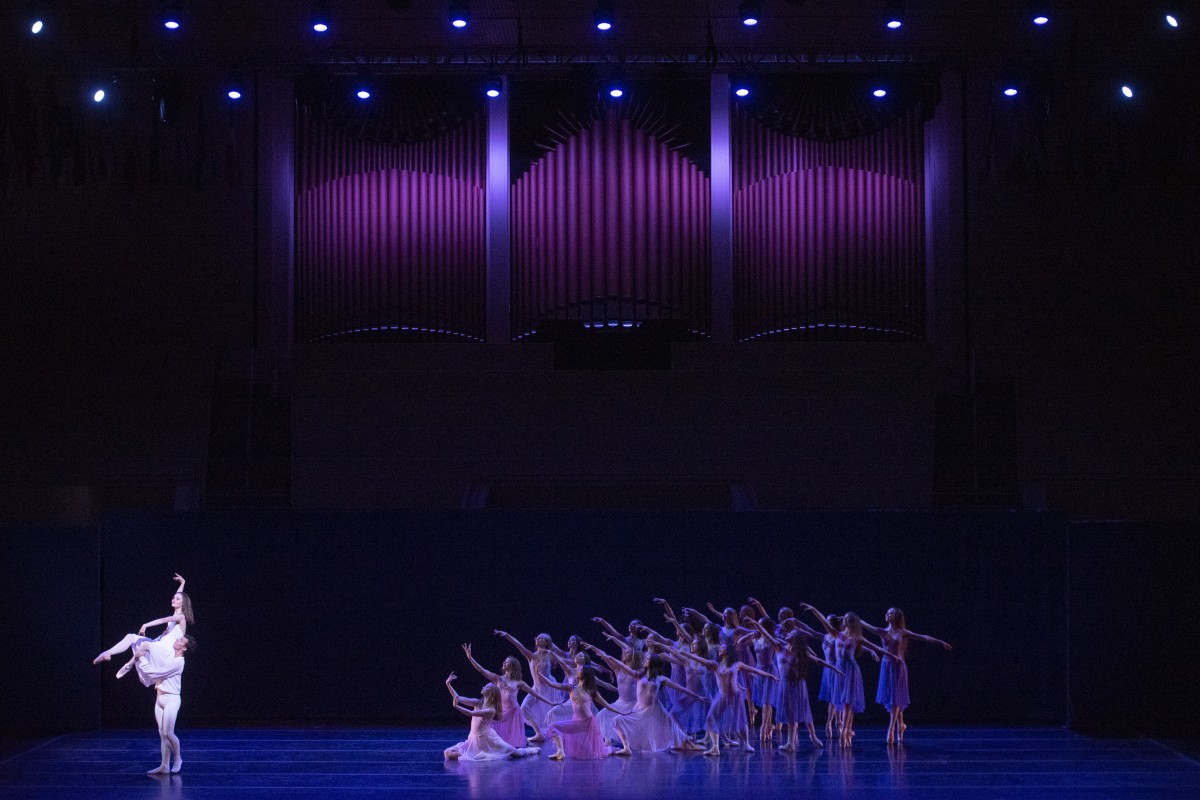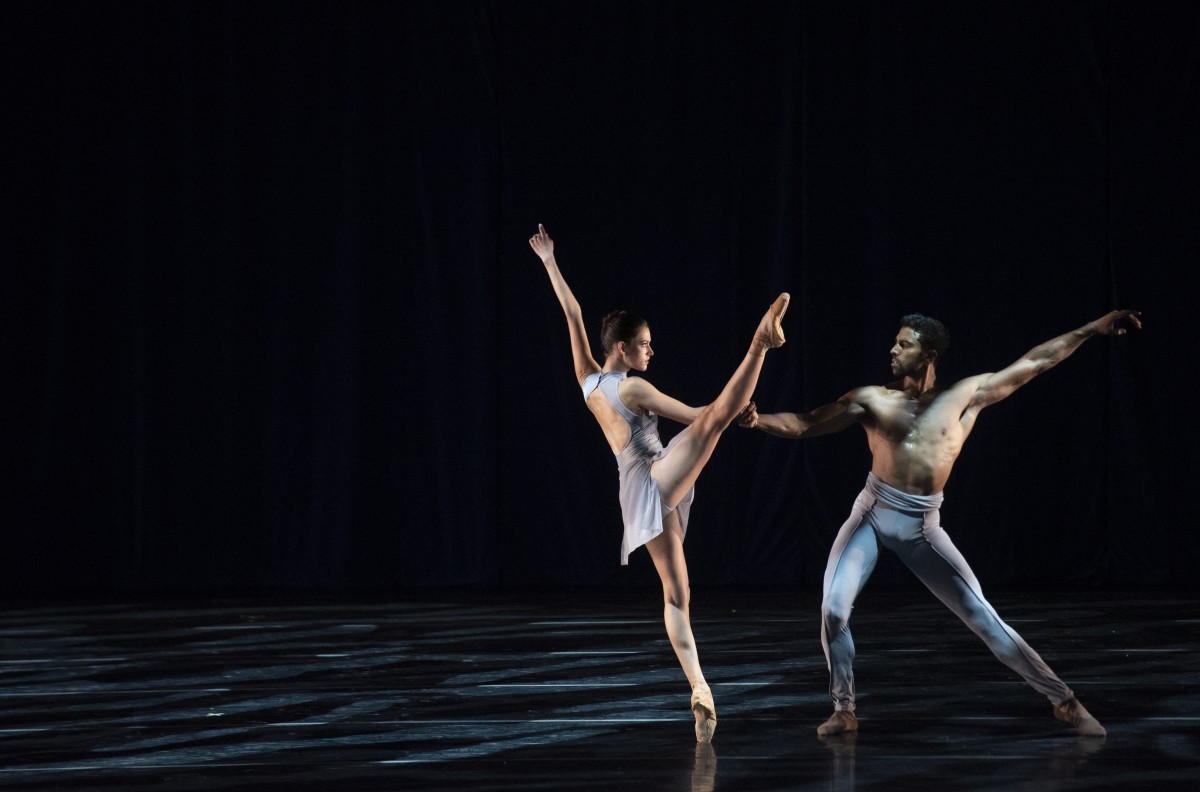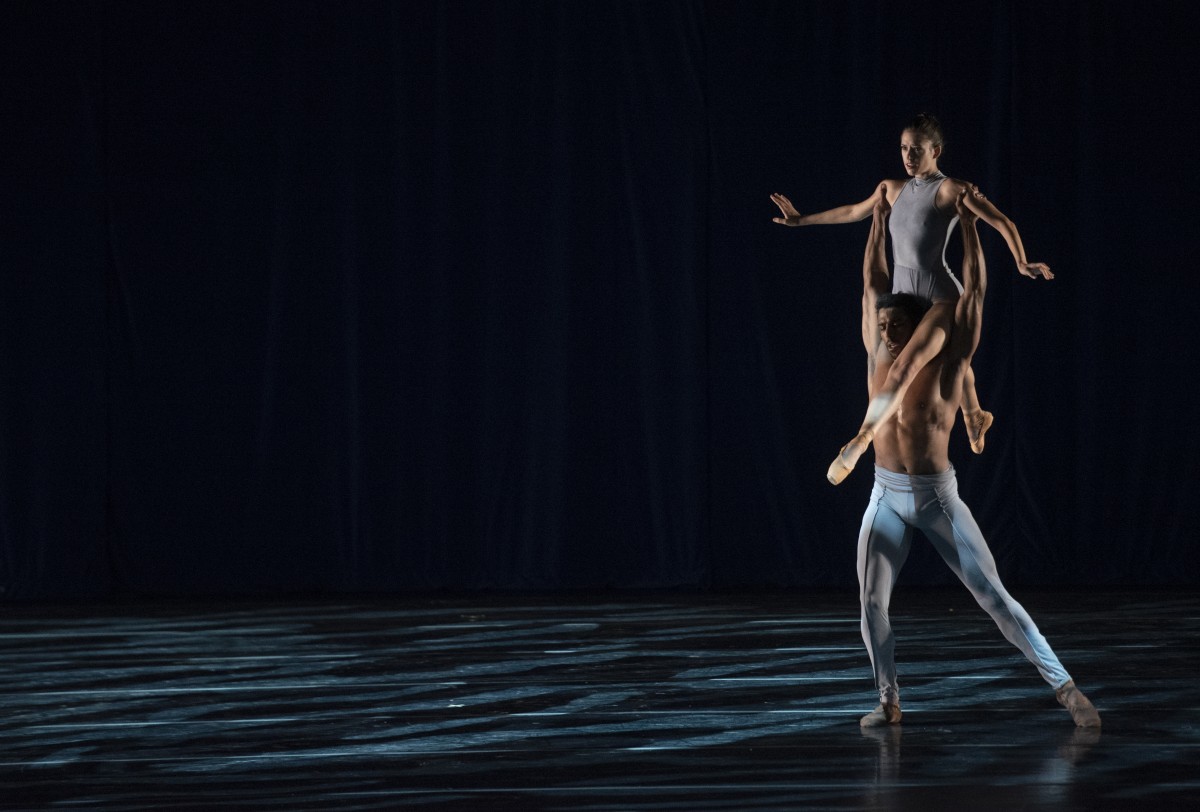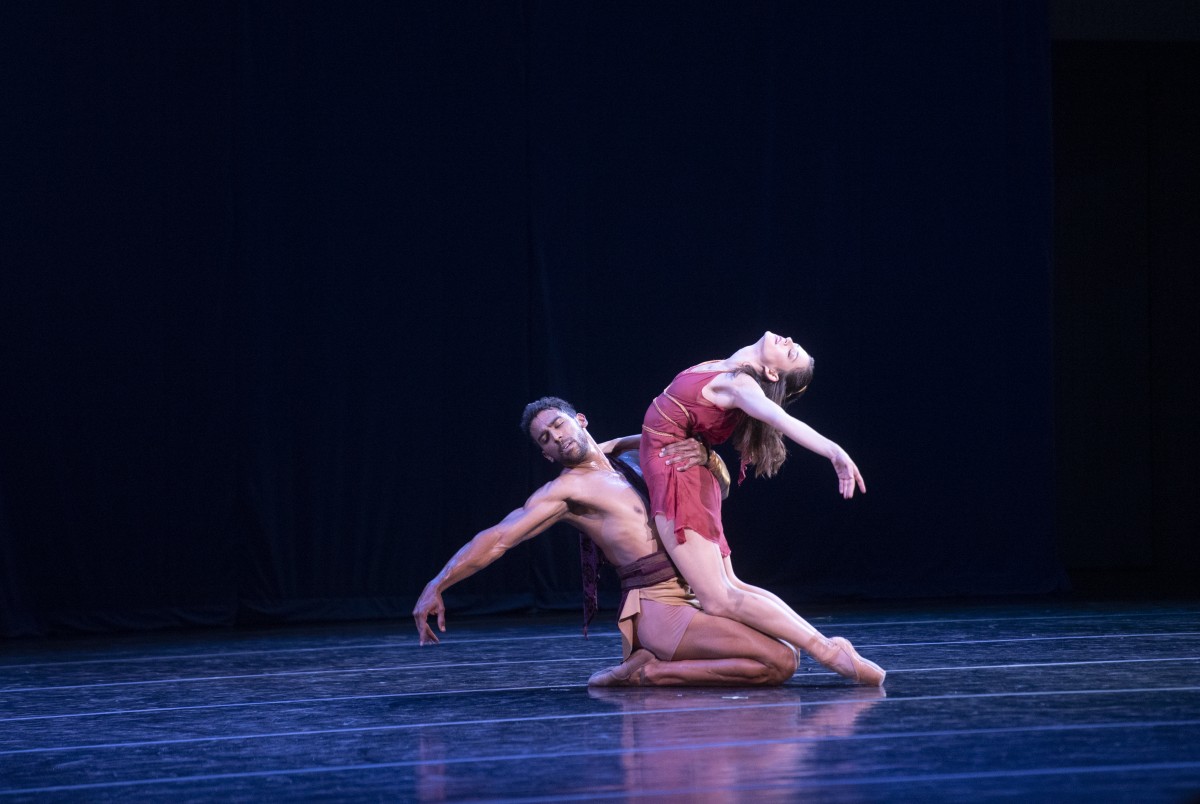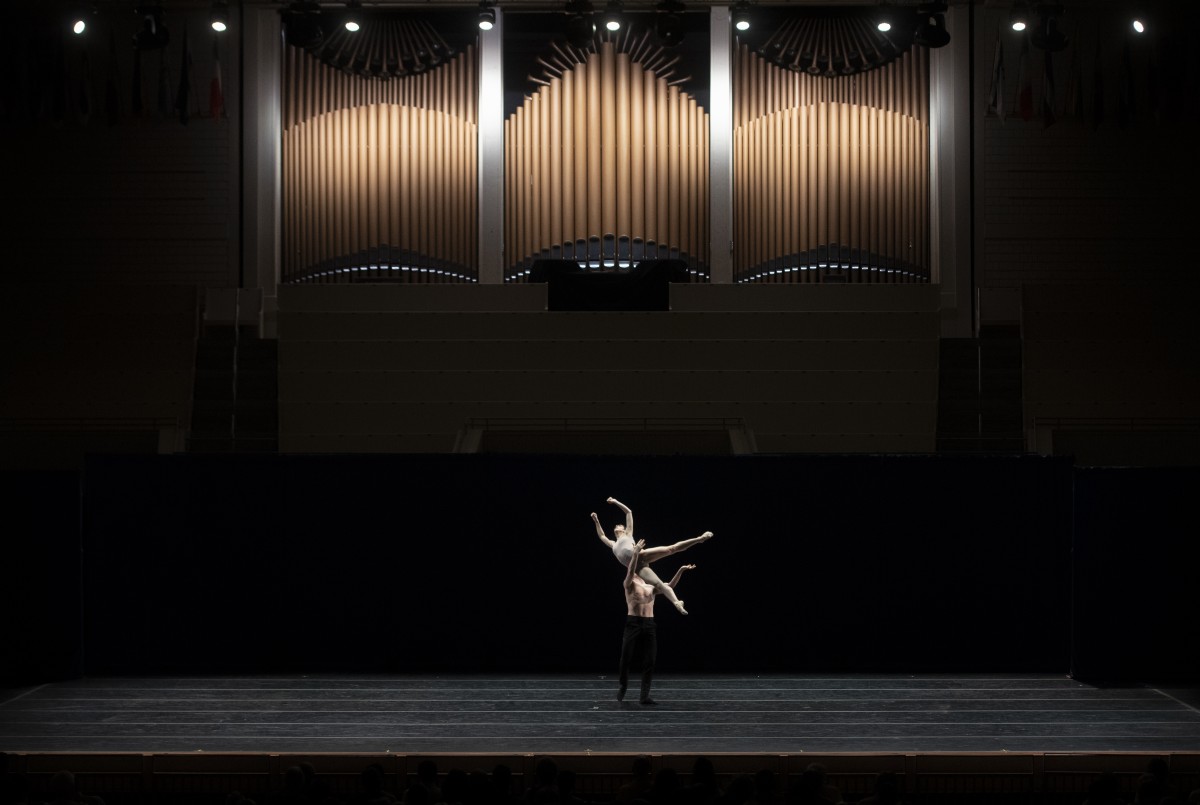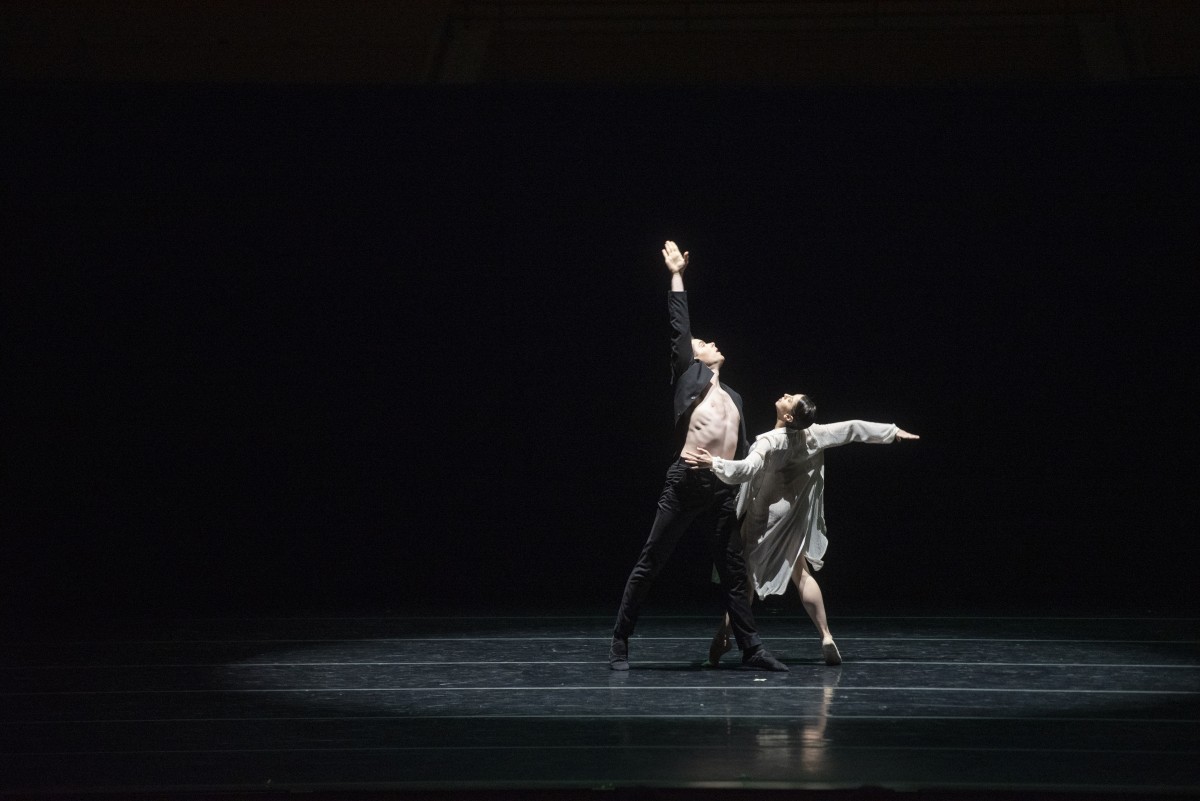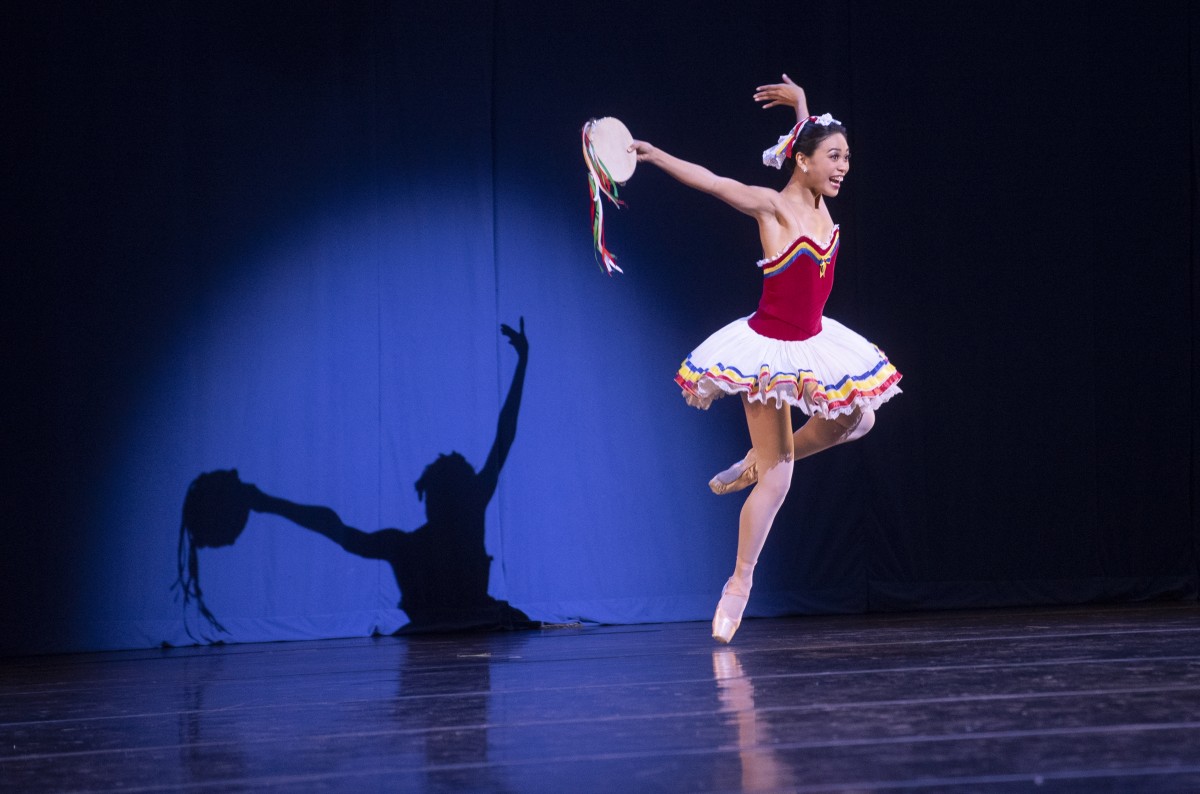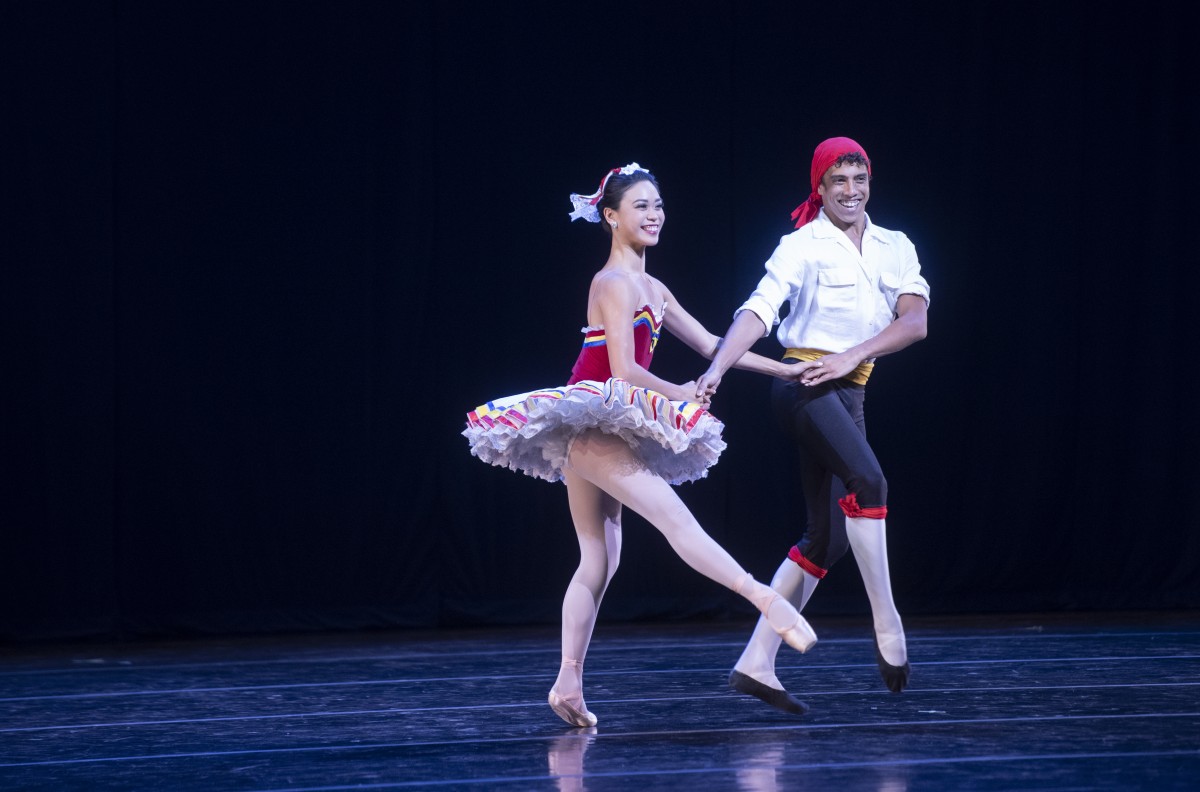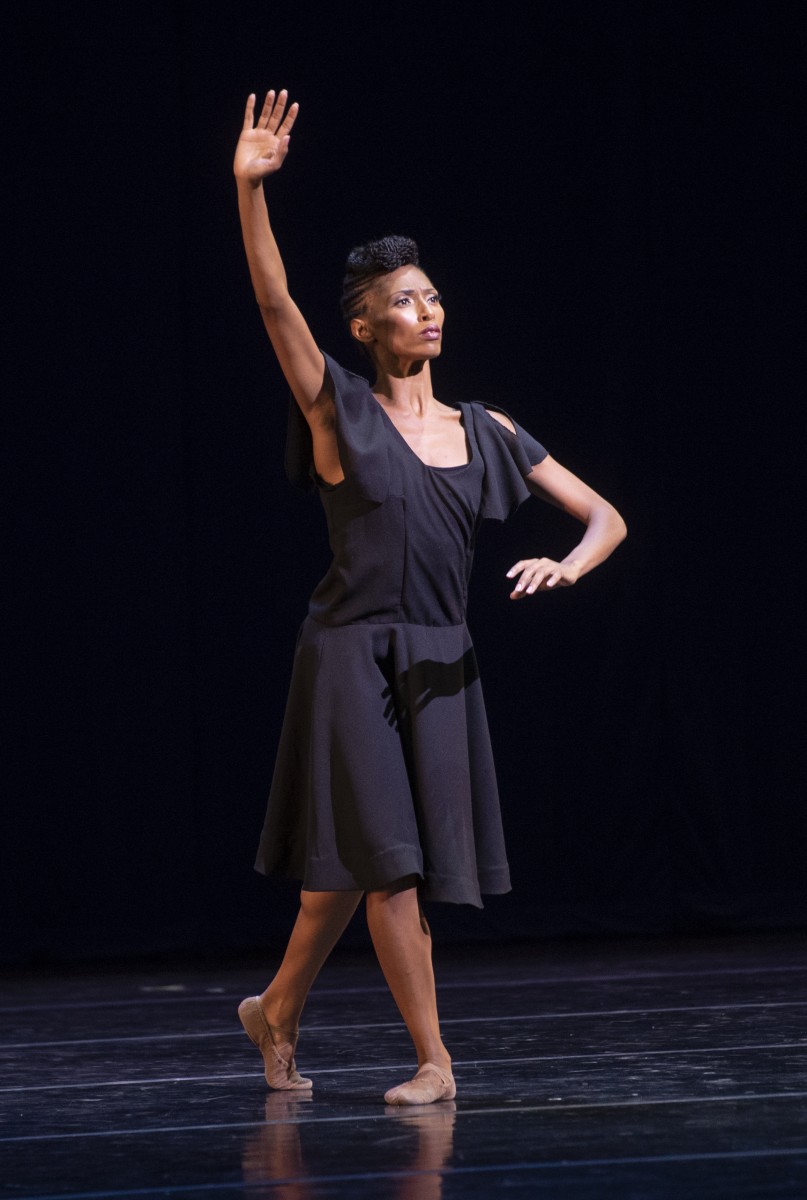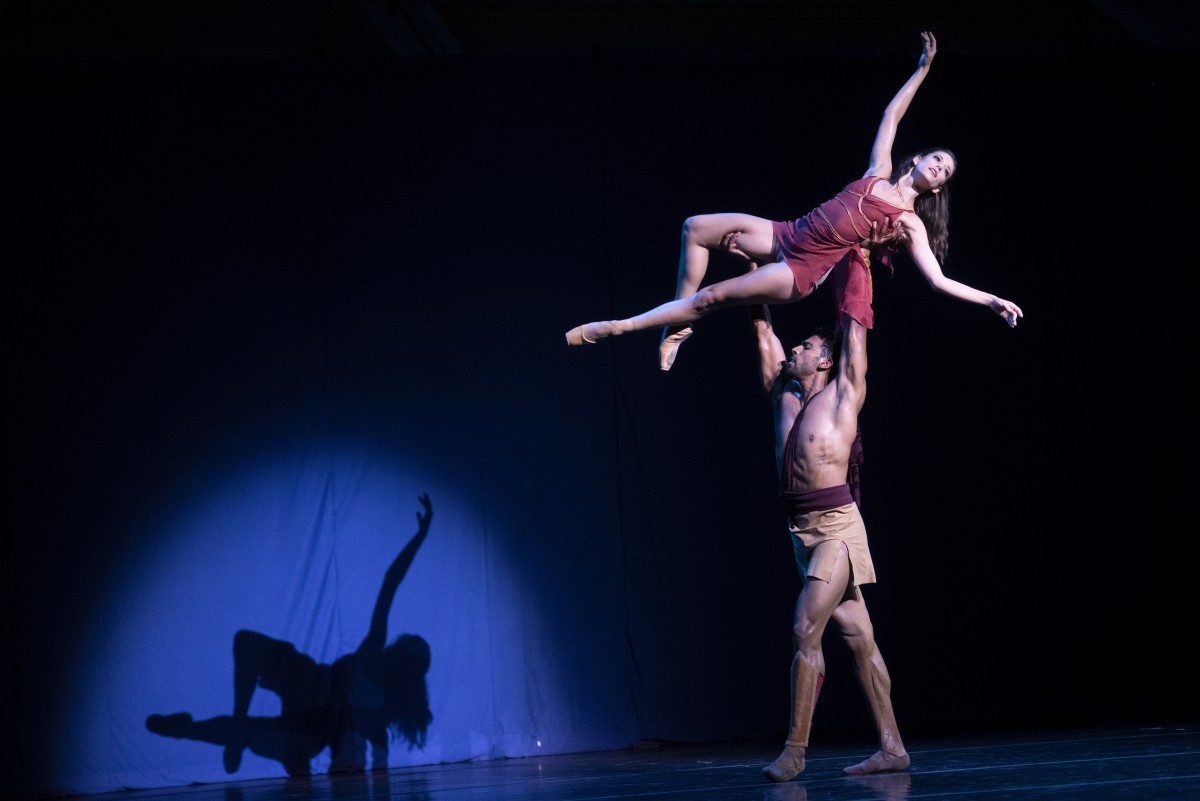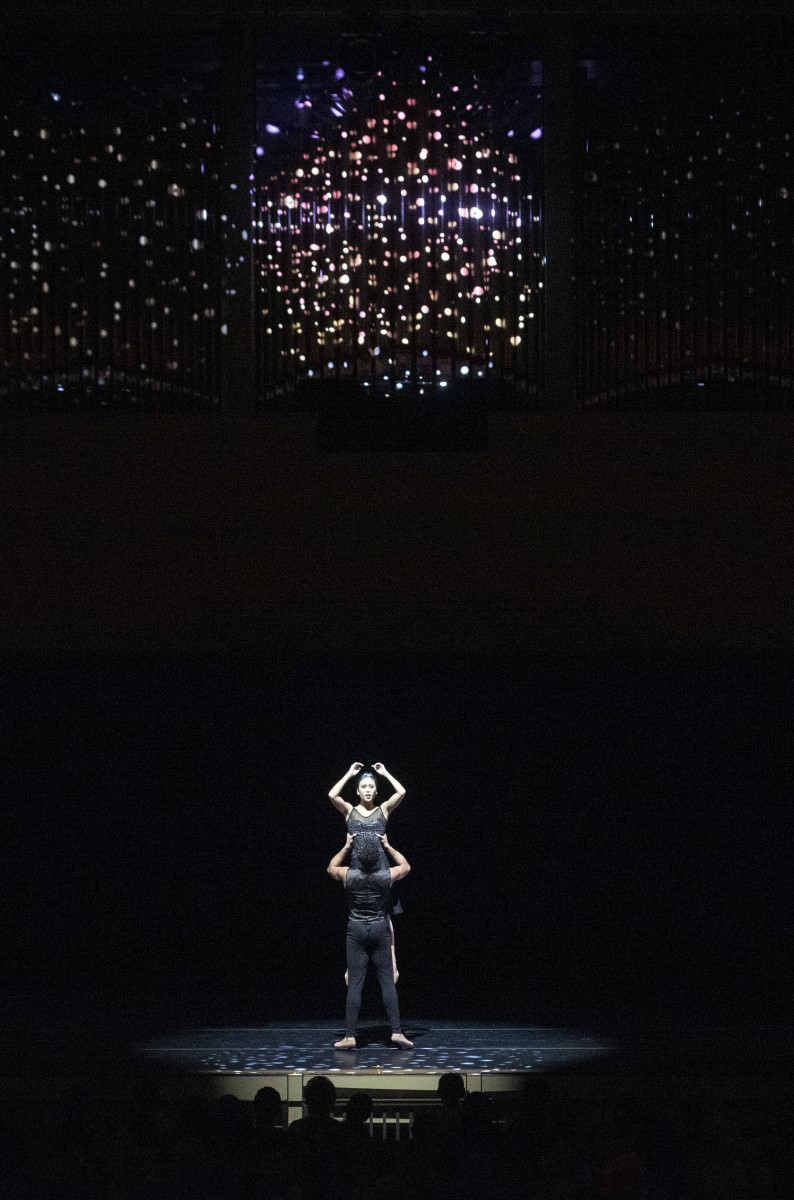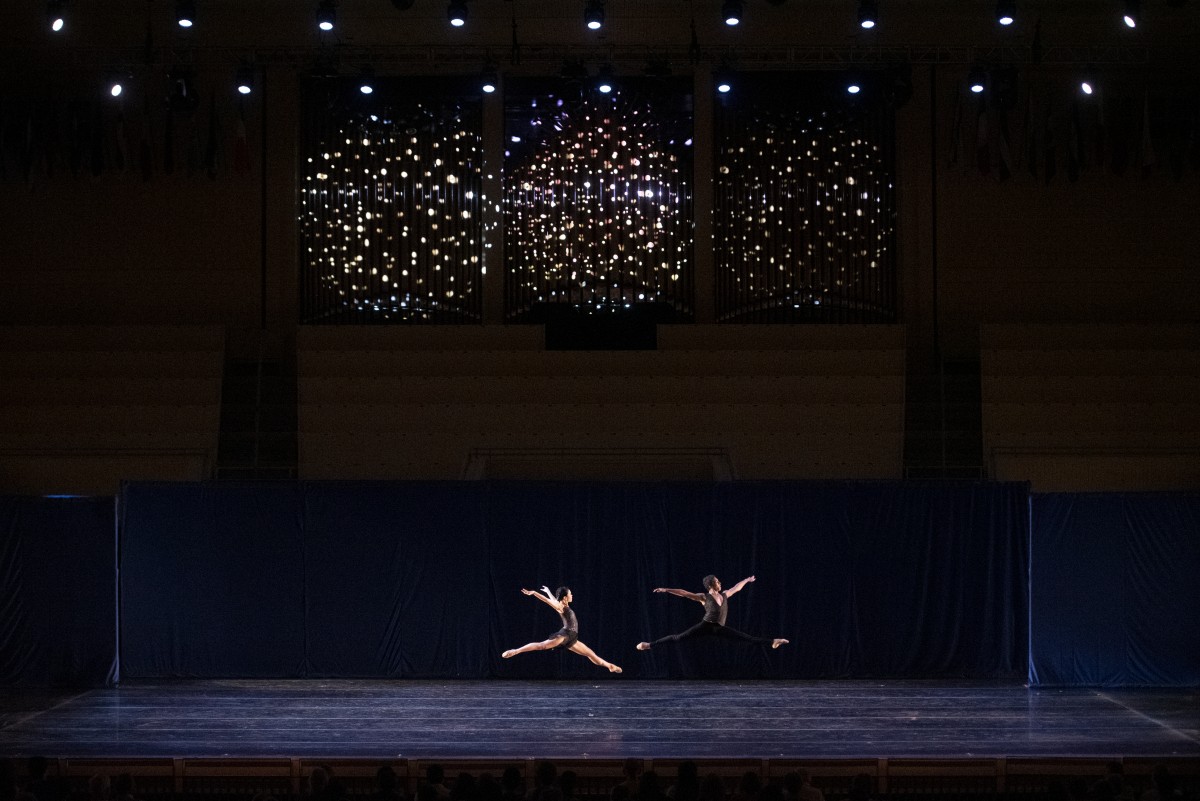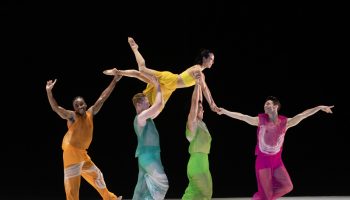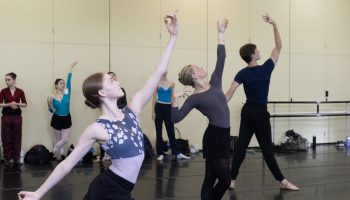Guest Critic: Steve Sucato
Monday night’s edition of the annual Chautauqua School of Dance’s Alumni Dance Gala in the Amphitheater proved yet again the school is a summer breeding ground for some of the finest dance talent in the world. The jam-packed program of nine short works triumphed over the muggy conditions to bring the appreciative audience repeatedly to its feet throughout the evening to applaud the top-flight dancing and dance works presented.
Curated by Sasha Janes, director of contemporary studies for the School of Dance, and a familiar name to dance audiences the past several decades at the Institution, the program led off with a bit of Christmas in July in the form of the “Mirlitons” dance from School of Dance Artistic Director Jean-Pierre Bonnefoux’s The Nutcracker.
Set to music by Tchaikovsky and staged by Kennedy Center honoree and School of Dance Director of Ballet Studies and master teacher Patricia McBride, the lively ballet trio was performed by current Chautauqua School of Dance students Alexandra Baksay, Johanna Sigurdardottir and Julia Vinez (who will join Pennsylvania Ballet this coming season).
Sometimes called the “Dance of the Reed (or Pipe) Flutes,” Bonnefoux’s rendition was a fast-moving, effervescent dance sans often-used flute props. With choreographic influences from his former boss and ballet legend George Balanchine, the 2 1/2-minute dance was full of quick-changing footwork and leg extensions.
Next was a reprise of Janes’ 2013 pas de deux “Dominant Curves” that left the audience breathless. Chautauqua’s “king of the pas de deux,” Janes originally created the piece on dancers from Richmond Ballet; it is one of his very best.
Performed by alumni dancers Anna Gerberich (Joffrey Ballet) and Pete Leo Walker (Aspen Santa Fe Ballet) to music by Osso and Sufjan Stevens, “Dominant Curves” was all about its curving movement both on the ground and in the air. Acrobatic in its myriad of beautiful and daring partnered moves that saw Walker lift Gerberich in the air and then swirl and wrap around his shirtless torso, and so thickly lacquered in grace as to defy any hint of exertion by the dancers — such as Gerberich’s feather-like descent from a lift high over Walker’s head to delicately reach the ground — the pas de deux was the stuff ballet dreams are made of.
Switching gears, modern dance beauty then took center stage in a solo excerpt from 1969’s “Masekela Langage,” the first of two works on the program by legendary choreographer Alvin Ailey.
Inspired by the era of South African apartheid and the race-induced violence of 1960s Chicago, the solo was performed by 2006 Chautauqua alum and current dancer with Alvin Ailey American Dance Theater, Jacqueline Green. Driven by the soulful jazz trumpet music by Hugh Masekela, Green poured her heart out in choreography that mirrored the mood of Masekela’s music. Sometimes angry and pounding her fists on the stage floor, and sometimes appearing frightened with eyes darting about, Green’s dancing covered the breadth and width of the stage in pirouettes, leaps, and leg-extending steps that captivated both visually and spiritually.
Rounding out the program’s first half was Balanchine’s 6-minute burst of ballet fireworks, Tarantella.Staged by McBride, who debuted the pas de deux with Edward Villella in 1964, the fast-moving, folk-dance flavored piece danced to ebullient music by composer Louis Gottschalk, was performed with giddy charm by alumni Angelica Generosa (Pacific Northwest Ballet) and nearby Jamestown-native, Jordan Leeper (Atlanta Ballet).
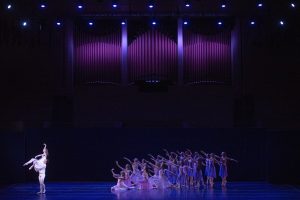
Balanchine’s nod to the southern Italian dance meant to ward off death from a tarantula bite, was itself a killer in its exhaustive pace and non-stop virtuosic choreography dense with jumps, leaps and an obscene amount of turning steps that Generosa and Leeper adroitly performed.
While the program’s first half might have been enough to satiate many dance fans, its second half piled on even more helpings of world-class dance delights, beginning with an excerpt of the “Walpurgisnacht” scene from Balanchine’s 1975 opera production of Faust that was turned into its own ballet in 1980. The scene depicting Mephistopheles bringing Faust to watch the traditional celebration on the eve of May Day when the souls of the dead are released, was played out in dramatic fashion as 24 female teen students of Chautauqua School of Dance rushed the stage, long hair flowing behind them, in a wave that was both frantic and magnificent.
Serving as a brief look at some future alumni stars in the making, the ballet excerpt was highlighted by the performances of lead dancers Elaine Rand and Vinez, along with an eye-catching solo by the ballet’s lone male dancer, Noah Martzall.
Next, alumni and married couple Christina LaForgia and David Morse, both of Cincinnati Ballet, performed Morse’s 4 1/2-minute barn-burner, “Short Ride in a Fast Machine.” The pas de deux, premiered in 2016 by Charlotte Ballet and set to music by John Adams, was Morse’s contemporary ballet version of concentrated virtuosity, a la Balanchine’s Tarantella, albeit less intense.
Danced with zeal by LaForgia and Morse in spotlight, the pair ripped through pulse-quickening, back-and-forth unison choreography that sparkled.
Next came a dance treat rarely seen outside of Ailey’s two namesake dance companies, “Fix Me, Jesus” from Ailey’s iconic 1960 work Revelations. Performed by Green and special guest artist Antonio Douthit-Boyd, formerly of Alvin Ailey American Dance Theater, the pair wowed in the spiritual duet that both dancers undoubtedly have ingrained in the very fabric of their beings from having performed it innumerable times. Dancing to traditional music of the same name, Green and Douthit-Boyd were flawless in the work’s slow, bendy steps and wonderfully rendered balancing moves. Patting at the air with their hands like the patting of a dog’s head, the work calling on the Divine for healing and salvation was itself divine.
Rounding out the program were reprises of two ballets seen in past summer seasons at Chautauqua, beginning with Mark Diamond’s “Spartacus” pas de deux.
Set to Soviet-Armenian composer Aram Khachaturian’s powerhouse score for the ballet, Diamond’s choreography did its best to try and match the music’s dynamism and emotional intensity. Performed by Walker and Gerberich looking typecast in their roles as the muscular Thracian gladiator and his wife Sura, the pas de deux depicted their last morning together before he was to go off to battle. Diamond effectively filled the pas de deux with passionate embraces and tortured realizations of having to say farewell to each other — that was moving.
A farewell of a different sort was then played out in “Hallelujah,” an excerpt from Janes’ 2015 ballet, Sketches from Grace, danced to late singer Jeff Buckley’s popular rendition of the Leonard Cohen song “Hallelujah.” Performed by Generosa and Leeper, the pas de deux combines a contemporary dance aesthetic and playfulness with the melancholy sadness of watching a home movie of a loved one whose life was cut short. The dancers lovingly performed Janes’ soft and reflective choreography that concluded with Leeper lifting a backwards arched-bodied Generosa heavenward in a final, poignant image.
Based in Painesville, Ohio, Steve Sucato is a contributing writer, critic and reporter. His work has appeared in such publications as The Plain Dealer, The Buffalo News, Pittsburgh City Paper and Dance Magazine, among others.


